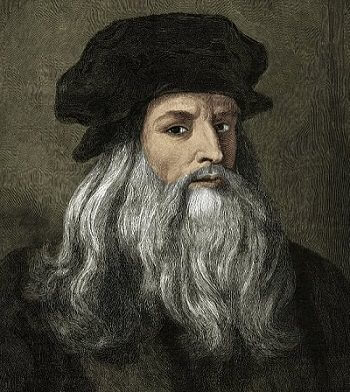Leonardo Da Vinci, the polymathic genius of the Italian Renaissance, lived a life as intriguing as the masterpieces he crafted. However, his death, like his life, remains shrouded in mystery. This comprehensive analysis aims to uncover the truth behind how did Leonardo Da Vinci die.
A Life To Remember
Leonardo Da Vinci’s life was a tapestry of art, science, and innovation. His artistic inclinations were apparent from an early age, leading to an apprenticeship under Andrea del Verrocchio, a master artist of Florence1. His natural talent and curiosity propelled him to become a renowned painter, sculptor, architect, engineer, and scientist, leaving behind an indelible mark on the world.
A Glimpse into Leonardo’s Later Years
The last years of Leonardo’s life, marked by his service to King Francis I in France, were filled with innovative designs and imaginative inventions2. Despite his declining health, Leonardo continued to draw, teach, and dream, residing in the Chateau de Cloux, close to the King’s summer palace.
The Enigmatic Circumstances of His Death
Leonardo Da Vinci passed away on May 2, 1519, in Amboise, France2. While the cause of his death remains uncertain, recent studies propose that a traumatic nerve damage to his right hand may have impaired his painting skills late in his life3. This theory is based on the analysis of a 16th-century drawing by Giovanni Ambrogio Figino, depicting Leonardo’s right arm wrapped in clothing, with his right hand appearing stiff and contracted3.
Theories Surrounding Leonardo’s Death
There are several theories about how Leonardo Da Vinci died, each rooted in varying evidence and speculation.
The Stroke Theory
For many years, it was widely believed that Leonardo suffered from right hemiparesis, a weakness on one side of the body often resulting from a stroke3. This theory stemmed from the fact that Leonardo, known to be ambidextrous, struggled with holding palettes and paintbrushes with his right hand during his later years3. However, he continued to draw and teach with his left hand3.
The Vegetarian Diet Theory
Leonardo’s known vegetarianism has also been linked to his death. High cholesterol is a risk factor for vegetarians who consume a lot of dairy products3. Some researchers speculate that this dietary lifestyle might have contributed to the development of a stroke, leading to his death3.
The Dupuytren’s Disease Theory
Another theory suggests that Leonardo suffered from Dupuytren’s disease, a condition where the tissue beneath the skin of the hand thickens and tightens3. However, the red chalk drawing of Leonardo does not show the clenched hand position often associated with muscular spasticity following a stroke3.
The Ulnar Palsy Theory
The most recent hypothesis proposes that Leonardo suffered from ulnar palsy, also known as “claw hand,” which results from acute trauma to the ulnar nerve3. This condition could explain the contracted appearance of Leonardo’s right hand in the red chalk drawing3.
The Last Will and Testament of Leonardo
Before his death, Leonardo made a will that provides insights into his final wishes and the distribution of his property1. He bequeathed his books, instruments, and painter’s tools to his pupil, Francesco Melzi1. The properties he owned in Milan were given to his servants, Salai and Battista de Vilanis1. He also allotted funds for the poor and for the carrying out of his funeral arrangements1.
The Funeral of Leonardo
According to his will, Leonardo desired to be buried in the church of Saint-Florentin in Amboise1. He wished for sixty large wax candles to be carried by sixty poor people during his funeral1. His body was to be transferred from his place of residence to the church by the chaplains of the church1.
A Stroke or Ulnar Palsy: The Final Verdict
While the stroke theory was widely accepted for many years, recent evidence suggests that Leonardo’s hand impairment was not associated with any other degenerative issues, cognitive or muscular3. This lack of associated symptoms makes it unlikely that a stroke was the cause of his death3. The ulnar palsy theory, thus, stands as the most plausible explanation for how did Leonardo Da Vinci die3.
The Legacy of Leonardo Da Vinci
Despite his death, Leonardo’s legacy continues to inspire and intrigue. His unfinished works, including the “Mona Lisa,” and his numerous drawings and notes, provide invaluable insights into the mind of this unparalleled genius3. His life and death continue to fascinate historians, artists, and scientists alike, underscoring the timeless impact of Leonardo Da Vinci.

